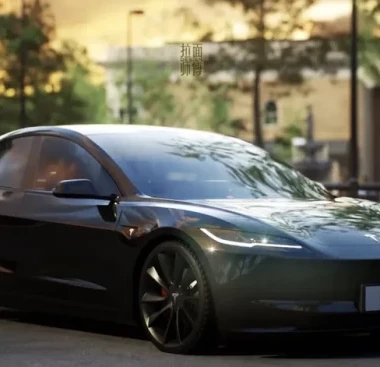The Tesla Model Y: A Look at its Regenerative Braking System
The Tesla Model Y, like all Tesla vehicles, uses regenerative braking to help recharge its batteries while also reducing wear on the brake pads. Regenerative braking works by converting the kinetic energy of the vehicle into electrical energy, which is then used to recharge the battery. The regenerative braking system in the Tesla Model Y is an innovative feature that helps to make the vehicle more efficient and reduce the need for traditional brake maintenance

When the driver applies the brakes in a Model Y, the regenerative braking system is activated, and the electric motor is used as a generator to slow down the vehicle. The generator produces electricity by converting the kinetic energy of the moving vehicle into electrical energy, which is then stored in the battery.
One of the benefits of regenerative braking is that it can significantly reduce the wear on the brake pads, as the system uses the electric motor to slow the vehicle down before the mechanical brakes are applied. This can extend the life of the brake pads, reducing the need for frequent replacements.
The amount of regenerative braking can be adjusted in the Model Y through the use of the vehicle's settings. By selecting the "Low" setting, the regenerative braking is reduced, and the vehicle will cost more than a traditional car. By selecting the "Standard" or "High" setting, the regenerative braking is increased, and the vehicle will slow down more aggressively when the driver lifts their foot off the accelerator pedal.
Regenerative braking in the Tesla Model Y is a complex system that involves multiple components working together. The system includes an electric motor, an inverter, a battery pack, and a regenerative braking control unit.
When the driver applies the brakes, the regenerative braking control unit activates the inverter, which converts the electrical energy generated by the electric motor into direct current (DC) electricity. The DC electricity is then sent to the battery pack for storage.
The amount of energy captured during regenerative braking can be affected by several factors, including the speed of the vehicle, the amount of force applied to the brake pedal, and the battery charge level. At higher speeds, the regenerative braking system is more effective, as there is more kinetic energy to convert into electrical energy. Similarly, the system is more effective when the battery is at a lower charge level, as it has more capacity to accept energy.
One of the unique features of the Tesla Model Y's regenerative braking system is the use of a single-pedal driving mode. In this mode, the vehicle is designed to slow down and come to a complete stop when the driver lifts their foot off the accelerator pedal, without the need to apply the brake pedal. This is achieved by increasing the regenerative braking force, which slows the vehicle down more aggressively. This can be a convenient feature for city driving, as it can reduce the need for frequent braking and acceleration.
In summary, regenerative braking is a key feature of the Tesla Model Y's energy efficiency and sustainability. It not only helps to recharge the vehicle's batteries but also reduces wear on the brake pads and offers a unique driving experience through the use of single-pedal driving mode.
Previous entry: How to charge a Tesla









